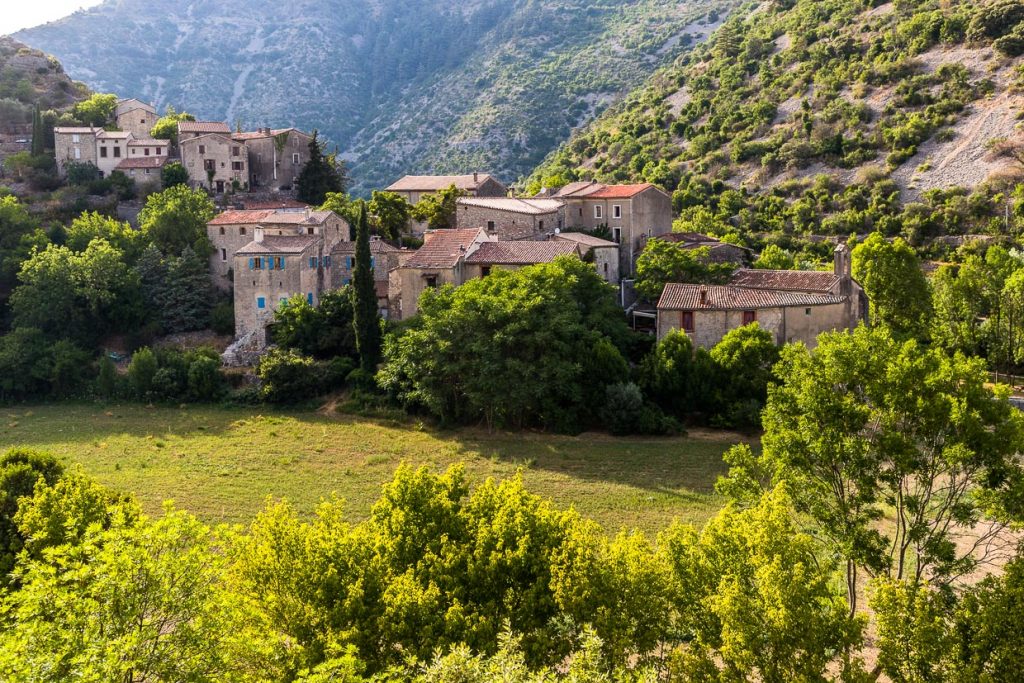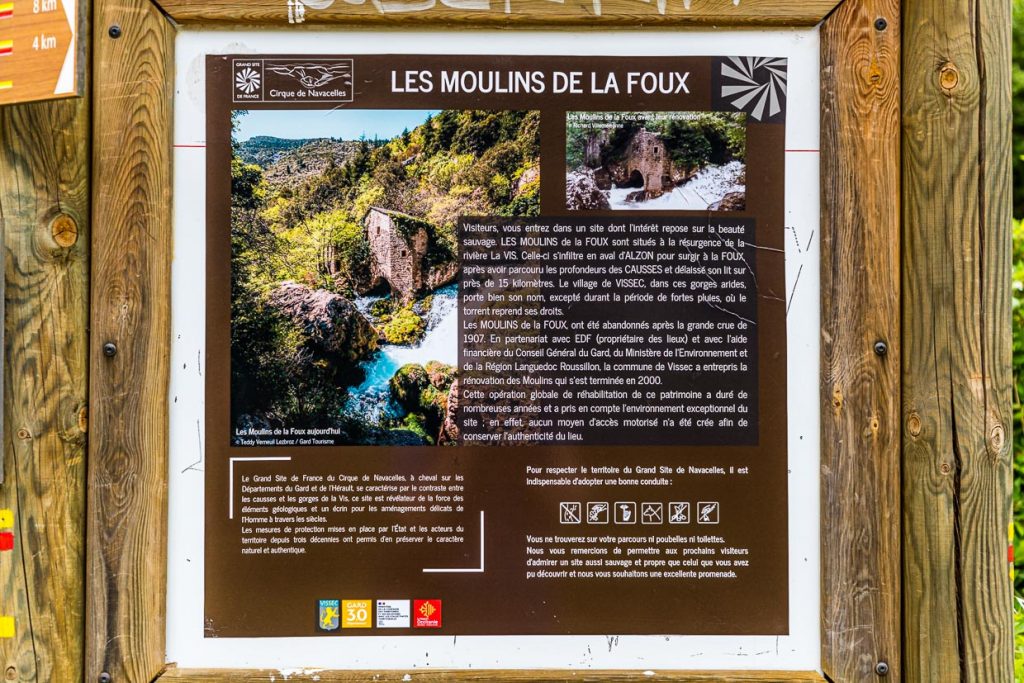Hike and time travel in the Cirque-de-Navacelles UNESCO heritage site.
The Moulins-de-la-Foux, the “mills at the source” are located at the fifth strongest spring in France. A spring that gushes out of the rock with pressure to this day, and for a thousand years was the site of several cascading mills built one below the other. As it was a thousand years ago, the mill, now restored, can only be approached on a footpath. Almost every century there was a flood that destroyed large parts of the mill, but it was always worthwhile to rebuild exactly on this spot. During the hike, which takes about four hours, there is time to reflect on the power of water and the importance of the miller and the mill.

The Vis River runs for 13 kilometers through an underground cave system before flowing back above ground as a bountiful spring, and in the geologically long course of time has cut a deep gorge in the limestone of the Massif Central of southern France.
From the Baume Auriol viewpoint, an oyster-shaped pyramid can be seen below, at the settlement of Navacelles. Here, a shortcut has formed between two courses of the river, where a waterfall now invites you to bathe in the water, which is rarely warmer than 12 degrees, even in summer.


Hike into the past
On a hike through the Navacelles gorge, one casually learns how rural life was a thousand years ago. The goal of the two-hour hike is the Moulins de la Foux, to which even today there is no passable road. From the hamlet of Navacelles, one still starts on an asphalted departmental road.


The entrance is located in the fork of two departmental roads and is easy to find, although one does not yet want to believe that the hike into solitude begins here.


Hiking is the miller’s delight
Soon the path becomes narrow and if not many hikers stray here, it occasionally grows completely closed. The Vis meanders windingly through the increasingly dark valley. There are warning signs that the water can rise surprisingly fast. No wonder one thinks wandering, because after all the today so peaceful river has created this enormous canyon with its power.

It is also on the path that one best understands the importance that mills must have had in the past. After all, in their heyday they were the only industrial enterprises in which machines ran. The miller’s profession also had a special social significance. For every farmer, going to the mill was part of everyday life. Because of the harder physical work at that time, more bread was eaten than today and the flour for it could only be found in the nearest mill. Walking is therefore not the miller’s pleasure, because he lived where there was water power that could drive the mill wheels. Grain and flour were transported on mules or by the farmers on their own backs.

The social role of a mill
For almost 900 years, the miller held an important social position. His work was as mysterious as it was simple. Using the only machine that existed in the countryside, he tamed the forces of nature to turn grain into flour. Socially, he also acts as a mediator. His place of work is remote and yet people have to meet at his place. The Moulins-de-la-Foux are particularly privileged in this respect because the fifth strongest spring in France is located here, which hardly has to fear a failure.

The history of the Moulins-de-la-Foux
The first mill was built almost a thousand years ago on this site, where the water flows out of the mountain at high pressure. The mill building was constructed so that its weight could withstand the water pressure. Several mills are constructed in cascade with each other, allowing the water power to be distributed among several grinders, each of which produces 30 kilograms of flour per hour.

Almost in every century there was a flood that destroyed large parts of the mill, but again and again it was worthwhile to rebuild exactly on this spot. Only after the flood in 1907 the mill was not put back into operation. It owes its present condition to a restoration that began in 1997 and was completed in 2000.

